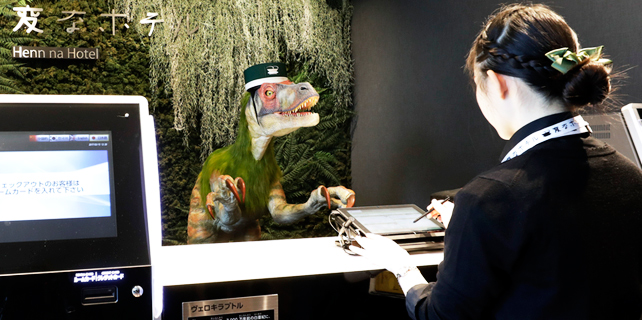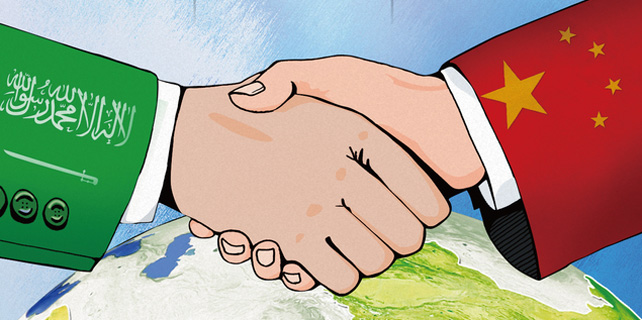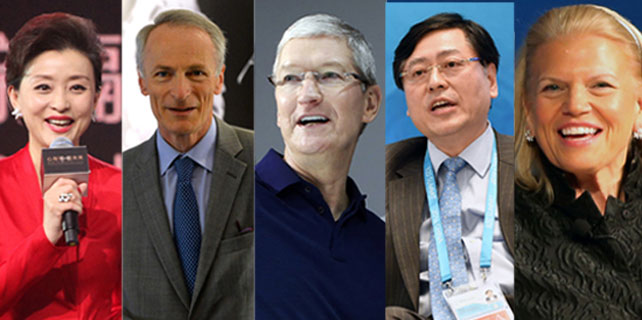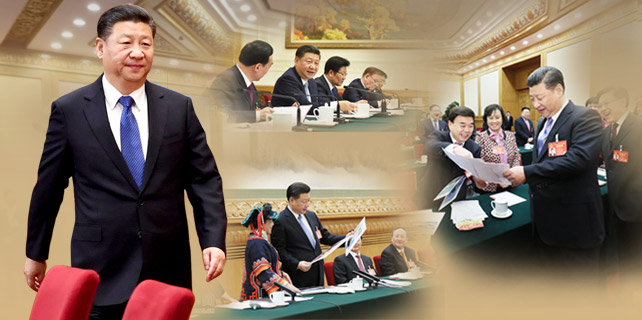Innovation nation

New businesses and technological progress will power China's leap into the future
Innovation is set to be the major driver of the Chinese economy, spearheading its move into new faster-growing and more dynamic sectors, according to the Government Work Report.
Chinese Premier Li Keqiang stressed the importance of research and development in the report delivered to the National People's Congress, China's top legislature, in Beijing on March 5.
"We will do more to implement the strategy of innovation-driven development, upgrade the structure of the real economy and improve its performance and competitiveness," he said.
The premier said investment in research and development was vital if China is to implement its Made in China 2025 initiative aimed at making the country internationally competitive in key new industries such as advanced information technology, robotics and advanced machine tools, modern railway technology, aerospace and maritime equipment, and high-tech shipping.
China's investment in research and development is set to reach 2.5 percent of GDP by 2020, five times the GDP level it was at in 1995.
This will be higher than current European levels of 2 percent - despite the EU setting a target of 3 percent in the 2007 Lisbon Treaty.
Li believed that new small private sector businesses held the key to driving innovation. Over the past year, the number of new businesses registered in China increased 24.5 percent, with 15,000 new businesses being created on average every day.
"Our policy of encouraging people to start businesses and innovate is an effective way of creating jobs through business startups and innovation; it is an important source of strength that fosters new growth drivers to replace old ones and that upgrades the economic structure."
The government set a target for GDP growth of "around 6.5 percent" while allowing for the possibility of exceeding this by adding "or higher, if possible".
The aim is for scientific and technological advances to contribute 60 percent of economic growth by 2020.
President Xi Jinping said initiatives such as the Shanghai Free Trade Zone will play a leading role in boosting China's innovation efforts.
The zone, which has 40,000 registered businesses in new sectors such as e-commerce and medical services, was launched in 2013.
Businesses there receive a number of benefits including having their goods and services not subject to customs clearance.
The government is about to set up seven more such zones later this year, making the total across the country 11.
Xi told members of the NPC during a panel discussion that Shanghai should lead the way.
"Shanghai officials should free their minds, seek new horizons, and be an example to the nation," he said.
He also emphasized that the reforms to create new industrial sectors would continue unabated.
"China's opening door will not close again," he said.
The importance of innovation has also been stressed at the National Committee of the Chinese People's Political Consultative Conference, the country's top political advisory body.
It is meeting this month alongside the NPC as part of the two sessions annual political meeting.
Robin Li, chairman and CEO of Baidu, the leading Chinese search engine, told the CPPCC, of which he is a member, on March 3 of the importance of artificial intelligence, and called for preferential policies for the development of the technology.
"Like the profound impact of the Industrial Revolution, today we've reached a tipping point where AI gets to bring sweeping changes to our lives, with so many achievable applications to be rolled out," he said.
Last year the government launched a three-year initiative to speed up the development of AI, hoping to create a market sector worth 100 billion yuan ($14.5 billion; 13.7 billion euros; 11.9 billion) by the end of 2018.
Applications could include facial recognition technology that could record the biological features of children, helping to thwart kidnapping and enabling them to be found if they go missing. It could also be used to route motorists around traffic jams.
A new report by leading accountancy and business advisory firm KPMG, The Changing Landscape of Disruptive Technologies, which surveyed 832 technology leaders, said China was the most likely alternative location to Silicon Valley to be the technology innovation center of the world.
Sixty-five percent of respondents said the world's second-largest economy could replace the Californian hub within four years with 57 percent saying it would be somewhere in ASPAC (Asia-Pacific countries) and 41 percent within EMEA (Europe, Middle East and Africa).
There was a call at the two sessions for the Pearl River Delta area to be transformed into this China Silicon Valley.
Ma Huateng, chairman of Tencent, one of the country tech giants, and a deputy to the NPC, said the Guangdong-Hong Kong and Macao Bay Area could be this global technology hub.
"Hong Kong will take the lead among these cities in international transportation, as well as accounting and financial, legal and other commercial services. Dongguan (in Guangdong) specializes in manufacturing. And Shenzhen hosts China's high tech giants, such as Tencent and Huawei as well as drone maker DJI," he said.
Such a new "Silicon Valley" could be facilitated by the completion next year of the new Hong Kong-Zhuhai-Macao Bridge.
It will link Zhuhai in Guangdong with both Hong Kong and Macao and be the world's longest sea crossing bridge. The Bay Area is already one of China's most affluent regions with a GDP of 2 trillion yuan in 2016, making it larger than either South Africa or Vietnam.
Lin Jiang, an economics professor at Sun Yat-sen University in Guangzhou, said the area could play a major role in China's innovation effort.
"The Bay Area can serve as the country's experimental field for new technologies and emerging industries."
Shenzhen, in particular, has become a hotbed of new startup technology businesses. Some 16 percent of the city's population were engaged in early-stage entrepreneurial activities in 2016, against a national average of 10 percent.
Chen Ning, 41, is typical of many of these entrepreneurs.
He returned to China after receiving a doctorate at the Georgia Institute of Technology and working in the telecommunications sector.
He set up Fusion Technologies, which conducts research and development into artificial intelligence and visual information, two years ago. Its turnover was 50 million yuan last year.
"The attraction of Shenzhen is the city's recognition of new technology," he says.
The city is also attracting start-ups from Europe. The French Tech Hub, a worldwide network initiated by the French government to offer services to French entrepreneurs, was set up in the city in Oct 2016.
Pierre Martin, economic counselor at the French consulate in Guangzhou, says many French start-ups have come to Shenzhen for a very specific phase in their development.
"They already have the idea and come here to develop the prototype in three to six months."
In the KPMG report, China was second only the United States in being the country most likely to produce disruptive technologies that have global impact.
Nearly a quarter of respondents (23 percent) said these were likely to come from China, compared to 9 percent from India, 8 percent from Japan and only 5 percent from Germany. Some 29 percent were still expected to come from the US.
Wang Qing, professor of marketing and innovation at Warwick Business School, says China is now catching up with the West after being light years behind at the time of reform and opening up in the late 1970s.
"I think China in some areas already is very close to what is cutting edge and, maybe in a couple of areas, they might even be more advanced," she says.
She believes one such area is high-speed rail. China opened its first line in 2007 and now has 19,000 km of track in service, more than all the rest of the world's high-speed rail networks together. China will be a likely bidder for construction contracts on the UK's HS2 high-speed rail link.
"They actually started in high-speed rail by borrowing Japanese technology but because of a lot of unique problems they had to do lots of innovations on top because of what they learned," she says.
"Because of the scale of the country's high-speed rail development, they have also accumulated experience that some other countries would not have."
Max von Zedtwitz , managing director of GLORAD, a research and development think tank which is based in both Shanghai and San Francisco, says China will need to have 3.7 million scientists working in research and development to meet its targets by 2020.
"Innovation is to some extent a numbers game. If you just have one idea per 1,000 people, then a country that has a 1.4 billion population is going to have an advantage over anyone else," he says
He points out in his recent book, Created in China: How China is Becoming a Global Innovator, which is now also published in Chinese, that China has had a 17 percent annual increase in patents since 2005 with applications reaching 2 million in 2014, three times as many as that of the United States (although, importantly, a smaller proportion are higher quality invention patents).
"There is definitely a race going on and I don't think the West has actually caught up with the severity of that race. China is opening up a new international front in the area of innovation. Because people matter so much in the race, the more people you have, the better you are at it."
Xu Jingxi, He Wei and Chai Hua contributed to this story.
andrewmoody@chinadaily.com.cn
















